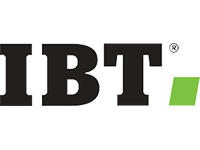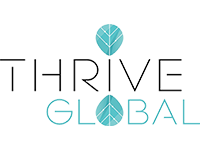Protect Yourself From Digital Abuse: Everything You Need To Know!

In the technology or digital era, we all are bound by our digital devices! The fact is that our phone has more information about us than our parents, loved ones, or guardians. Our digital devices know everything about us…our location, our last check-ins, our clicks, and almost everything! But the other fact that we can’t ignore is that digital abuses are increasing every day! Every day I see people getting threatened, abused, bullied, harassed, stalked, or intimated digitally. And, this is not at all a clear sign of a healthy relationship.
Digital abuses clearly show that the person is in a toxic relationship, and it needs to be ended. Research shows that one in four teens are harassed through digital devices. This growing issue also calls for demand for extra protection, safety, and security on our digital devices.
In this blog, let’s read about everything we need to know about digital abuse so that we can save ourselves from digital abuse. So, let’s get started.
What is Digital Abuse?

Abuses that happen through digital devices are known to be digital abuses. It means controlling, manipulating, harassing, controlling, or intimidating any person through the use of technology. Digital abuses can take various forms like sexual coercion, bullying, harassment, controlling, stalking, and more.
Digital abuse is right now most commonly seen in teen dating relationships but it is also highly found in online dating apps and social media platforms. Digital abuse can also be accompanied by various forms of abuse like verbal abuse, emotional abuse, and physical abuse.
Research shows that around 96% of physical abuse, sexual abuse, and psychological abuse from their partners are done through digital devices. Digital abuses are mostly done to gain control or power over the person. Digital abuse can only be done when someone has shared passwords, kept tabs on information, texted excessively, or controlled social media accounts.
It can also happen to people who are involved in sexting by using various forms of digital devices. Digital abuse can also be done out of jealousy, manipulation, controlling behavior, and more.
Behaviors of Digital Abuse
Online abuses or digital abuses consist of the same behaviors as offline abuses. Generally, there are four behaviors of digital abuse:
1.Coercive
Coercive type of digital abuse mostly happens when someone puts pressure on or harasses an individual by making them do things which uncomfortable like sexual favors or sexual acts.
2.Controlling
Controlling digital abuse is done when someone keeps an individual dominating or attempts to gain power control over them.
3.Embarrassing
An embarrassing situation in digital abuse arises when someone threatens an individual or shares their information publicly. It can also happen when someone posts or shares intimate information about an individual on public accounts.
4.Degrading
Degrading digital abuse happens when someone tries devaluing or belittling an individual digitally.
Common Examples of Digital Abuse

Some common examples of digital abuse are:
- When someone uses our social media account without seeking our permission or access.
- When someone keeps sending usunwanted messages or photos.
- When someone begins sexting without our consent.
- When someone keeps us sending sexual messages or links which makeus uncomfortable.
- When someone makes us feel afraid or threatens us when we don’t respond to their messages or calls.
- When someone keeps us looking at our digital devices continuously or tries to get tab, calls, or messages history.
- When someone keeps on spreading rumorsabout us through texting, calling, or online platforms.
- When someone creates our fake profile without taking our permission
- When someone posts embarrassing pictures, videos, or any type of information on social mediaor groups.
- When someone uses our personal information gained through digital devices to harass us.
- When someone writes nasty things about us on public pages.
- When someone sends threatening texts or chats.
- When someone pressurizes us to share or send sexual photos and makes us feel inferior when we don’t listen to them.
- When someone takes our video without our permission.
- When someone tells you “how to use your social media, what to like or what not to like, what to comment or what not to commenton.”
Signs to Identify Digital Abuse
In today’s world, technology is an important part of learning and growing. Many teens (knowingly or unknowingly) fall into the trap of abuse and the fact is that they don’t share it with anyone till it becomes a severe issue.
Generally, it is getting common to share passwords, personal information, provide access, or intimidating photos to show your love toward your partner. We often don’t realize that it can result in possessiveness, jealousy, or sharing with another person without your consent. And clearly, it is not a sign of love; it is the sign of a toxic relationship getting into a form of digital abuse.
By the time, we generally know that we are getting digital abuse, such abusive partners tend to limit our social media usage and keep on monitoring our every action taken on digital devices.
Slowly, love becomes stalking and harassing. Therefore, it is really important to identify signs of digital abuse before it becomes a severe issue. Below are some of the common signs to identify digital abuse in your relationship:
- Your partner tells you who you can’t be friends with or who you can be friends with on social media platforms.
- Your partner keeps on sending you threatening messages or negative messages on online platforms.
- Your partner keeps constant tabs on you.
- Your partner puts you down on social media platforms.
- Your partner sends you sexual photos and demands to send some in reply.
- Your partner pressures you to send explicit videos.
- Your partner steals or accesses your passwords.
- Your partner threatens that you can’t break the relationship and threatens you.
- Your partner keeps control ofyour digital devices.
How to Protect Yourself from Digital Abuse?

We all deserve to be loved and respected and in the name of love, no one can mistreat you offline or online. If you or your known is experiencing digital abuse, I strongly recommend you to chat or connect with an advocate to seek consultation.
If you’re dating through a digital device, you must remember to:
- Respect your partner’s boundaries
- Have digital-freetime and stay with your friends and family members
- Not respondingto uncomfortable messages or videos.
- Say no to sexting, if you are not comfortable.
- Protect your digital devices with password protection.
- Not share passwords with anyone
- Set your privacy settings.
- Be mindful while sharing locations.
Related Read: iOS 16 Safety Check Feature
If you’re a parent of a teen, you can protect them from digital abuses by:
- Reminding them that they have the right to feel safe.
- Teaching them how to build healthy relationships and boundaries
- Reminding them not to share passwords.
- Encouraging them to use “check-ins” mindfully.
- Remindyour teen to not share their digital devices with anyone.
- Encouraging your teen to share their location with their parents.
- Helping them to secure their accounts on social media.
- Teaching them everything about digital abuses.
Tips to Maintain Healthy Relationship Online
To protect yourself from digital abuses, here’s what you can do to have a healthy-tech relationship with your partner:
- Build boundariesin the beginning.
- Set comfort levels in the beginning.
- Whatever you do, do it mutually and try finding a happy medium mutually.
- It’s not important to tell each and every piece of information about yourself to your partner.
- Do not guilt-trip over toxic people.
Resources and Helpline for Digital Abuses
- If you or your loved one is a victim of any type of digital abuse, you can directly contact the National Domestic Violence Hotline:
1-800-799-7233
- For other mental health resources click:
- Resources like “Love Is Not Abuse” offertext and calling options for dealing with digital abuse. You can directly text them at 22522 for queries and concerns related to digital abuse.
- You can also find an advocate for digital abuse at: http://www.thehotline.org/www.hotline.org
- You can also contact Love Is Respect.org.
I hope this blog helps you with understanding everything you needed to know about digital abuse. Comment down for any queries related to digital abuse and online safety. For more such content, connect with us on all social media platforms.
Thanks for reading!




















